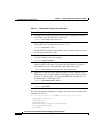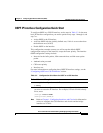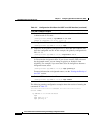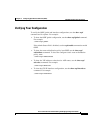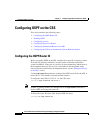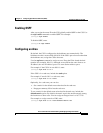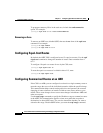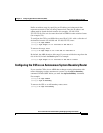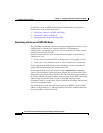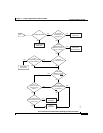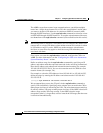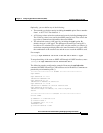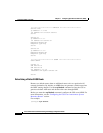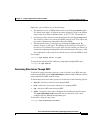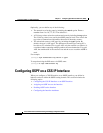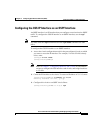
Chapter 3 Configuring Open Shortest Path First (OSPF)
Configuring OSPF on the CSS
3-16
Cisco Content Services Switch Routing and Bridging Configuration Guide
OL-4580-01
To advertise a route as OSPF ASE through all OSPF interfaces or generate a
default route, see the following sections.
• Advertising a Route as an OSPF ASE Route
• Advertising a Default ASE Route
• Advertising Other Routes Through OSPF
Advertising a Route as an OSPF ASE Route
The CSS OSPF functionality examines configuration parameters (such as service
configurations in content rules, keepalive behavior, VIP redundancy
configurations, and whether services are active or suspended) to make accurate
advertisement decisions on VIPs.
Specified routes related to VIPs are only advertised if both of the following
conditions are true:
• At least one of the related VIPs in a content rule or source group is active.
• At least one service related to an active VIP is available on a content rule.
If you configured the CSS for box-to-box redundancy, be aware that only the
master CSS (not the backup CSS) advertises the VIP.
We recommend that you use the /32 prefix in the ospf advertise command to
specify VIPs individually. Specifying entire subnets does not enable the CSS to
make proper decisions on advertising the VIPs. The advertisement must match or
fit entirely within a VIP range to make proper decisions. If the OSPF advertise IP
address range and the VIP range overlap, or the OSPF advertise range
encapsulates (that is, is larger than) or doesn’t match the VIP range, then the route
is advertised unconditionally.
The following flow chart shows the steps required for OSPF to advertise an IP
address. If the IP address is a VIP, the flowchart shows the conditions that must
be met for OSPF to advertise the VIP.



